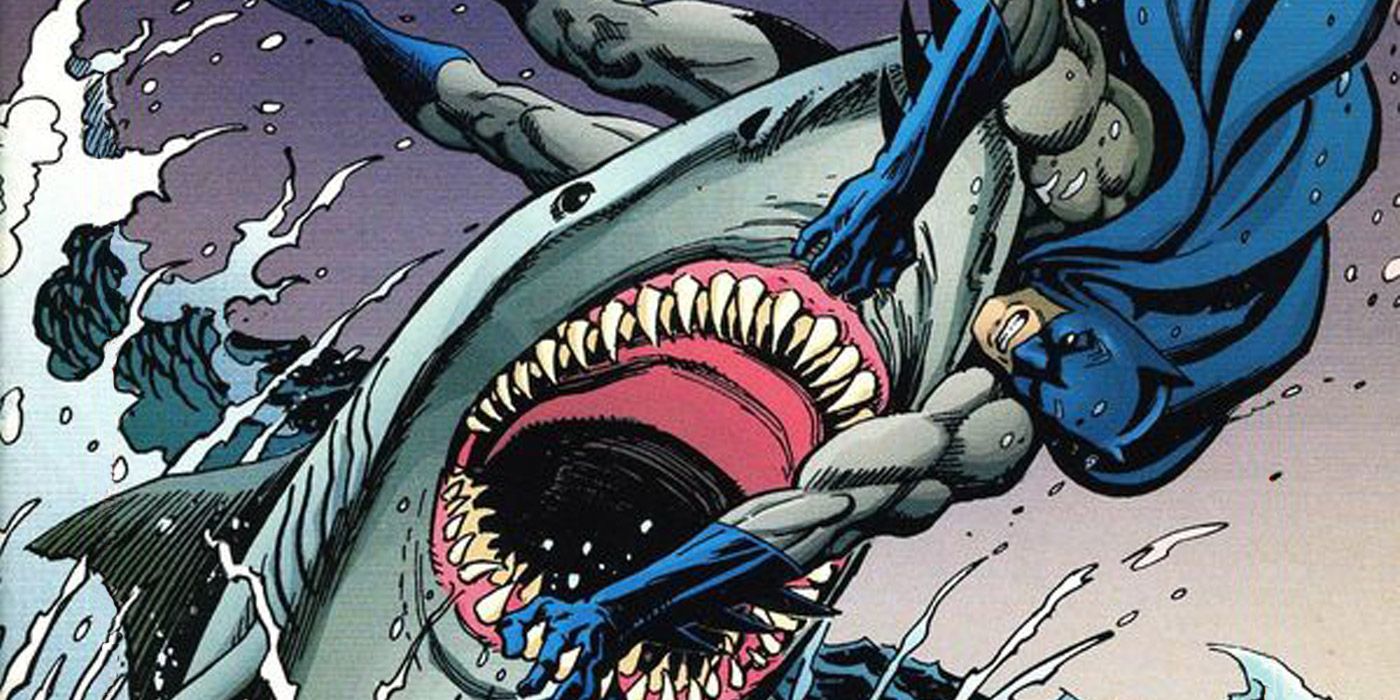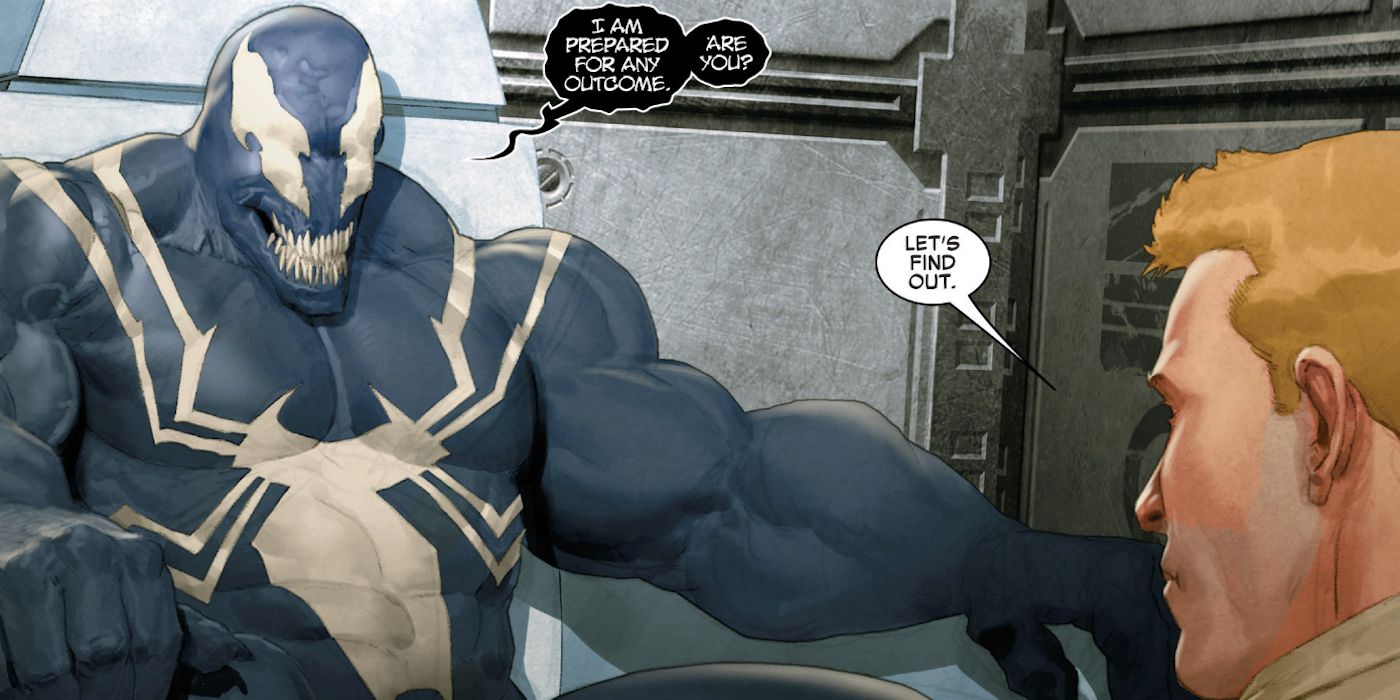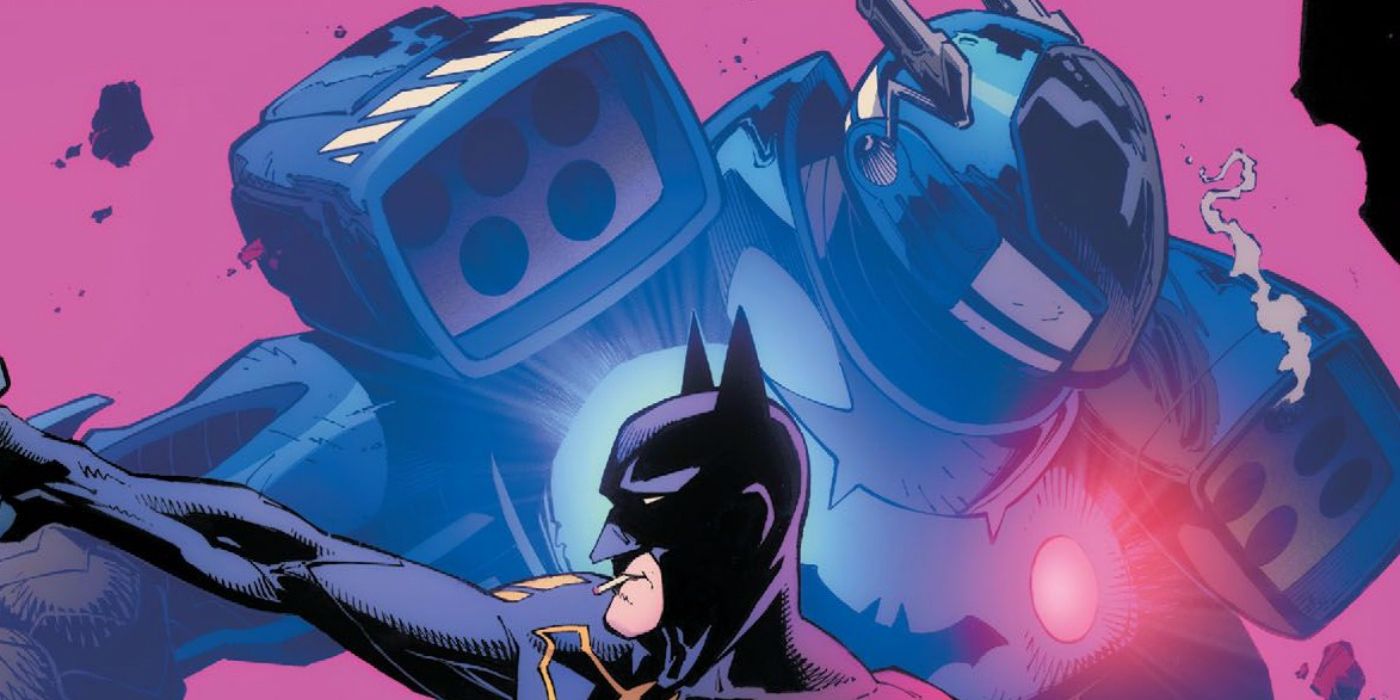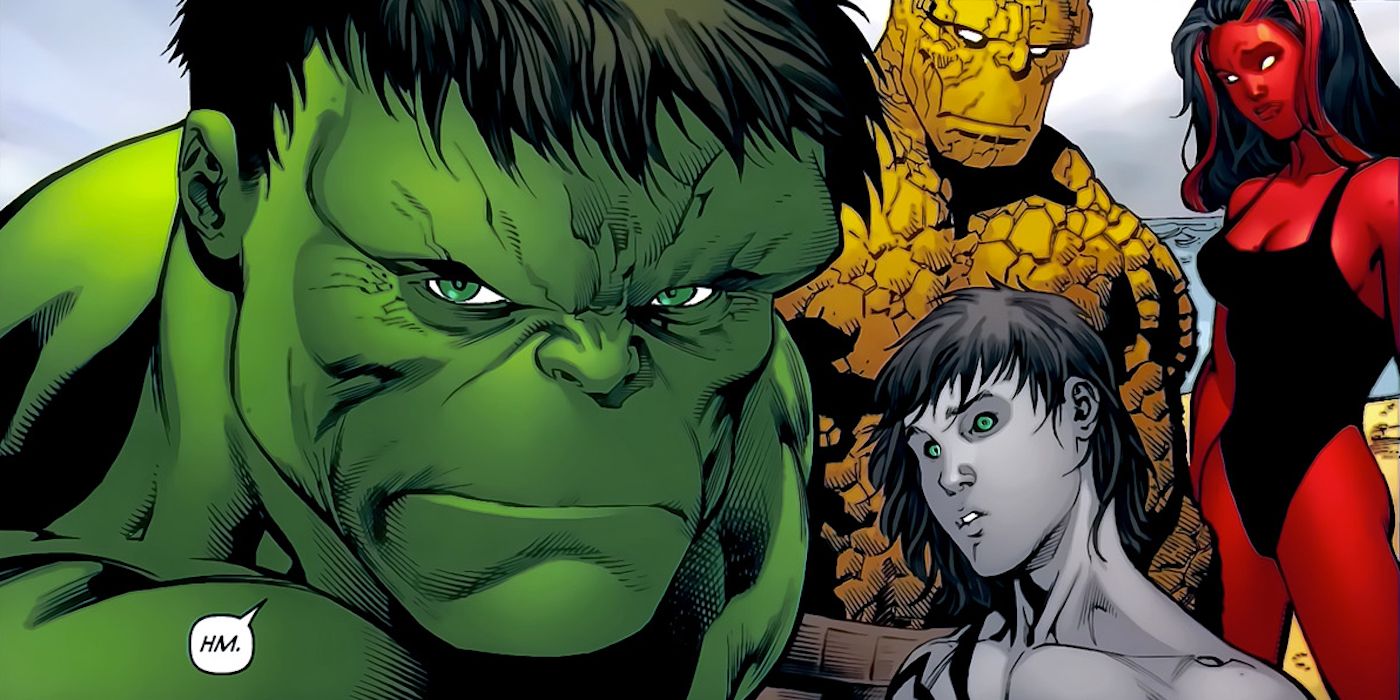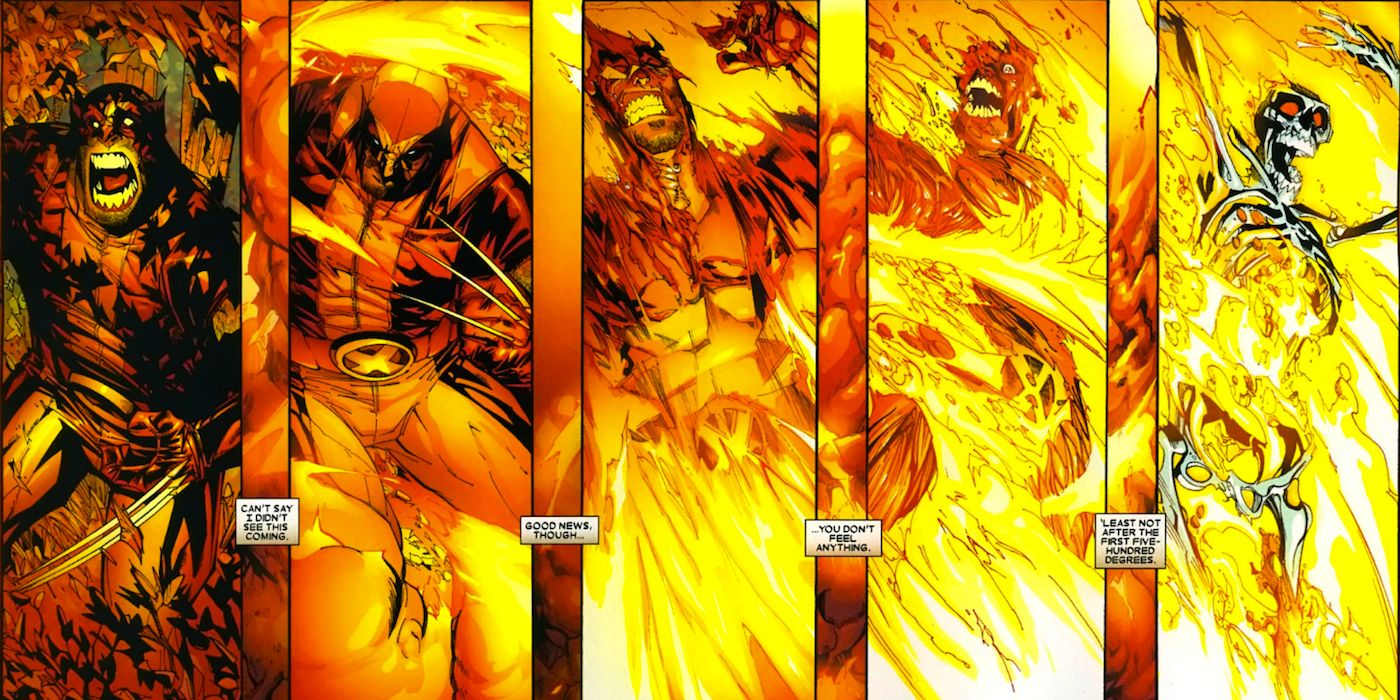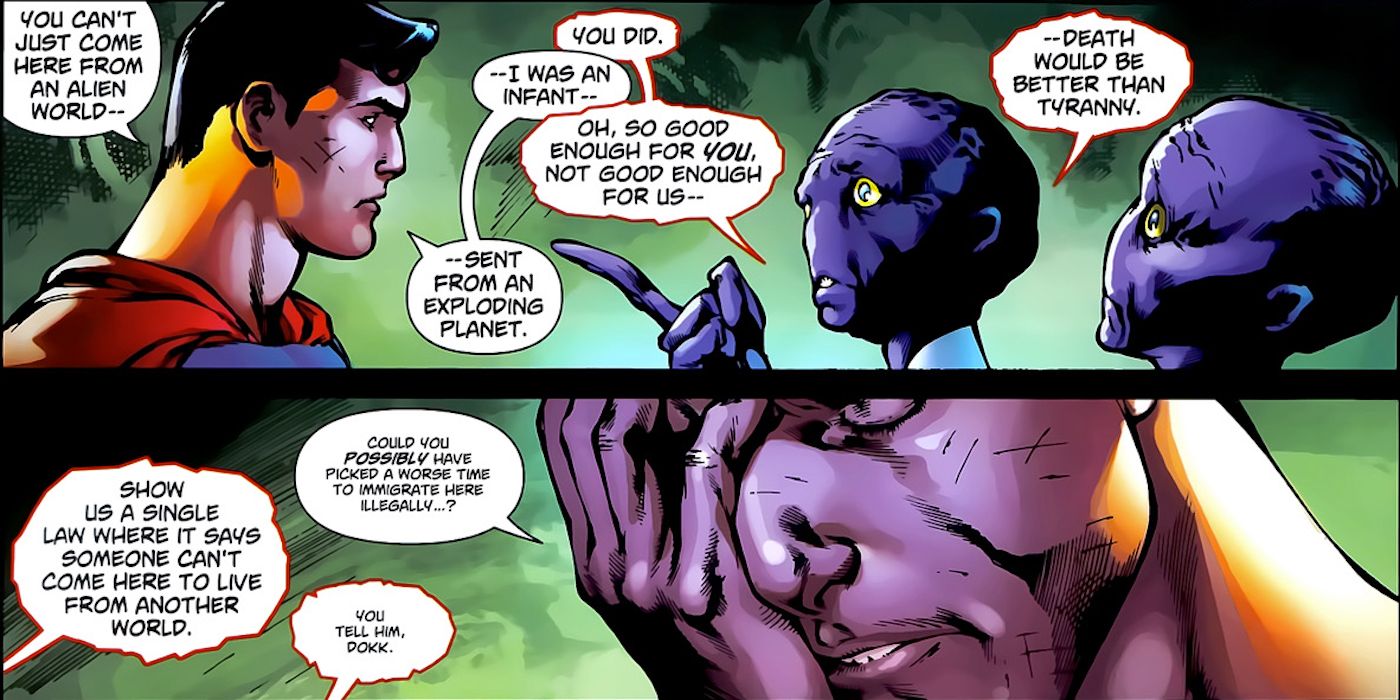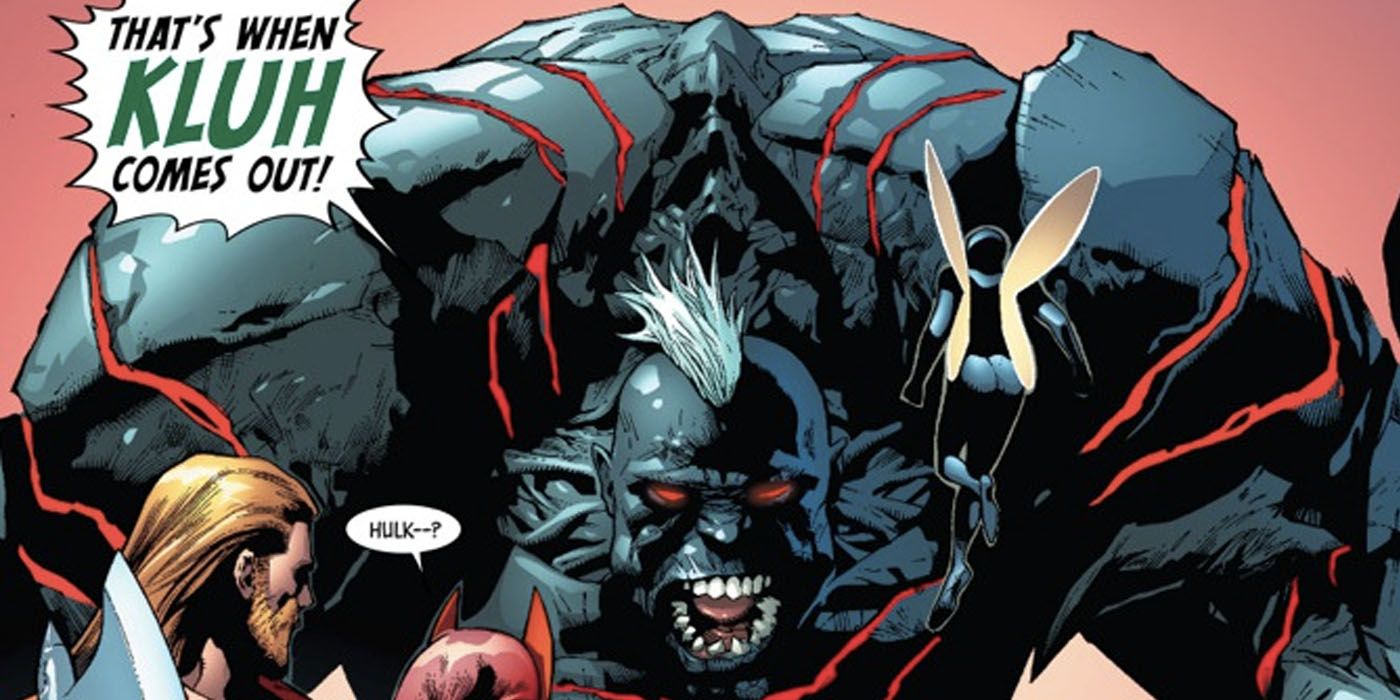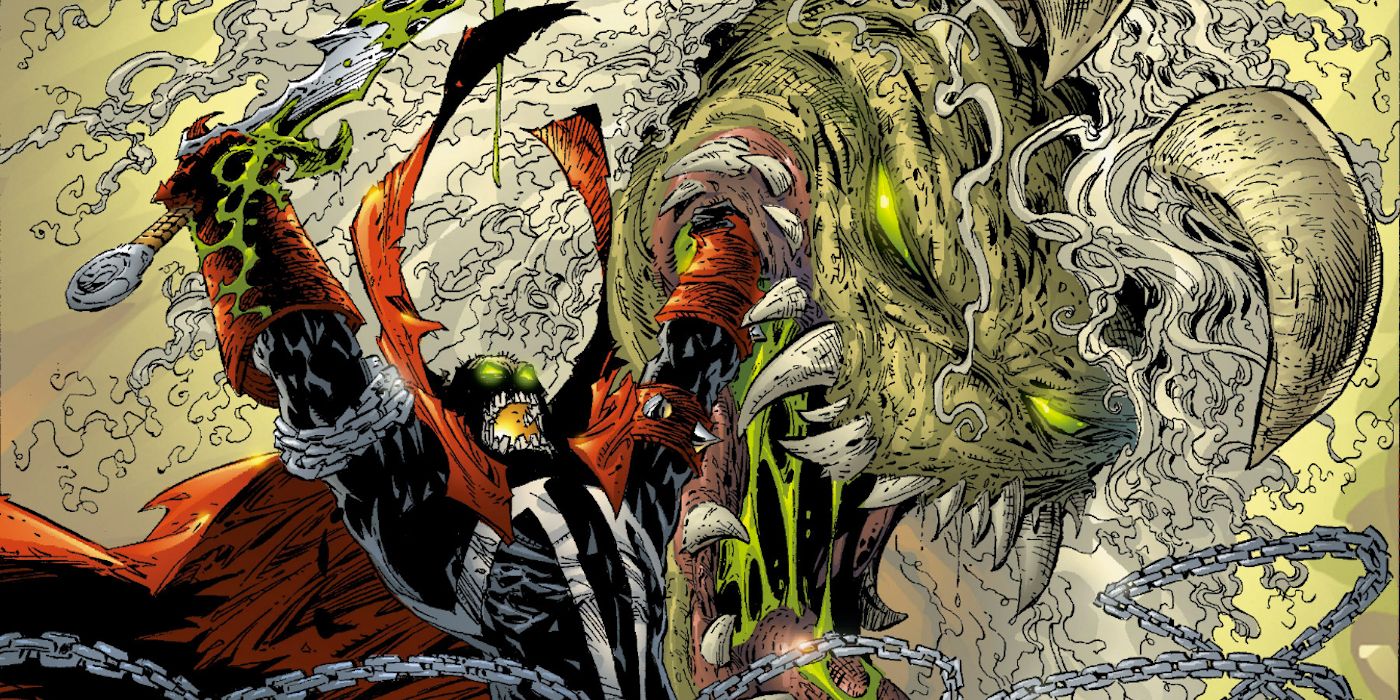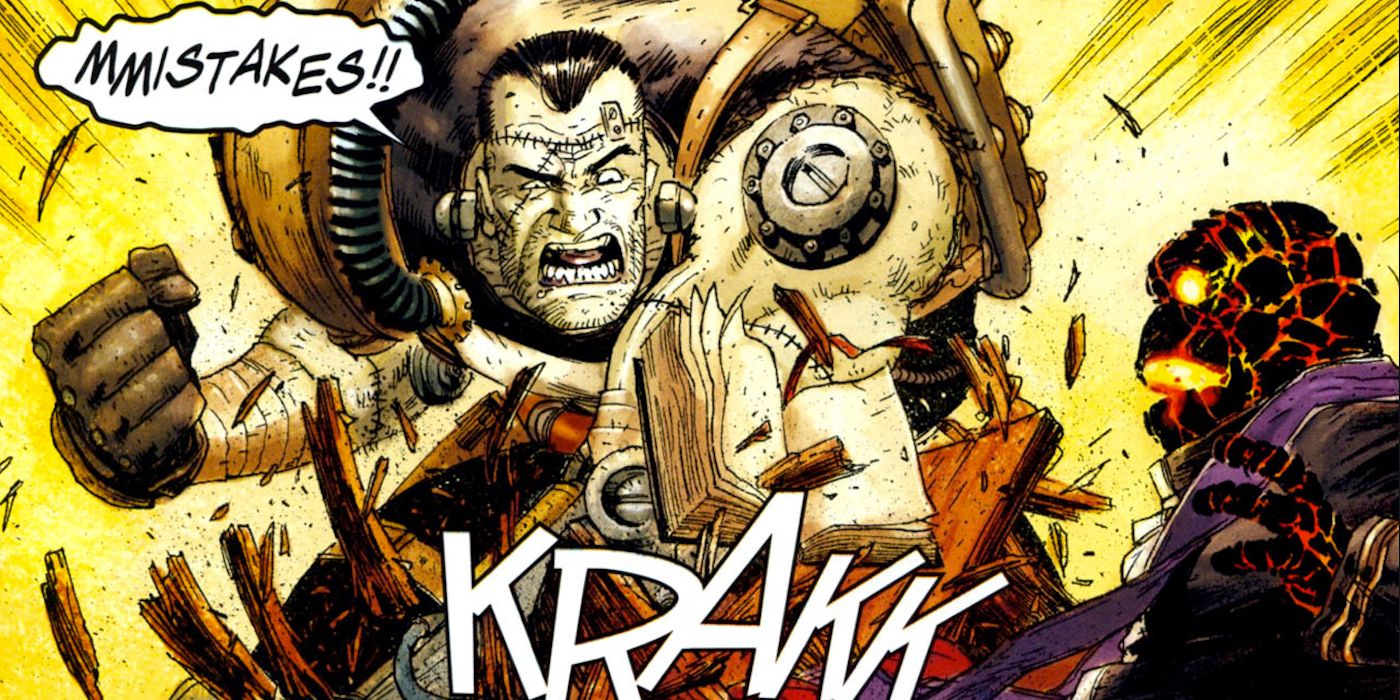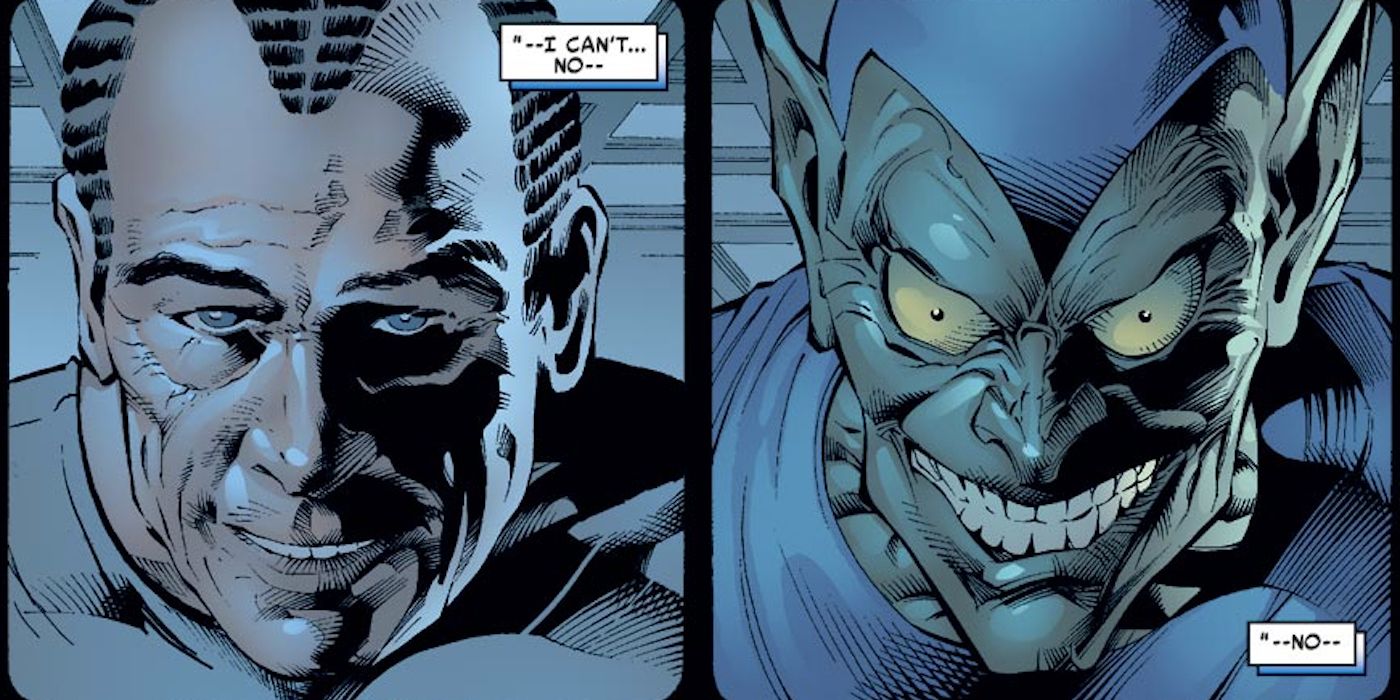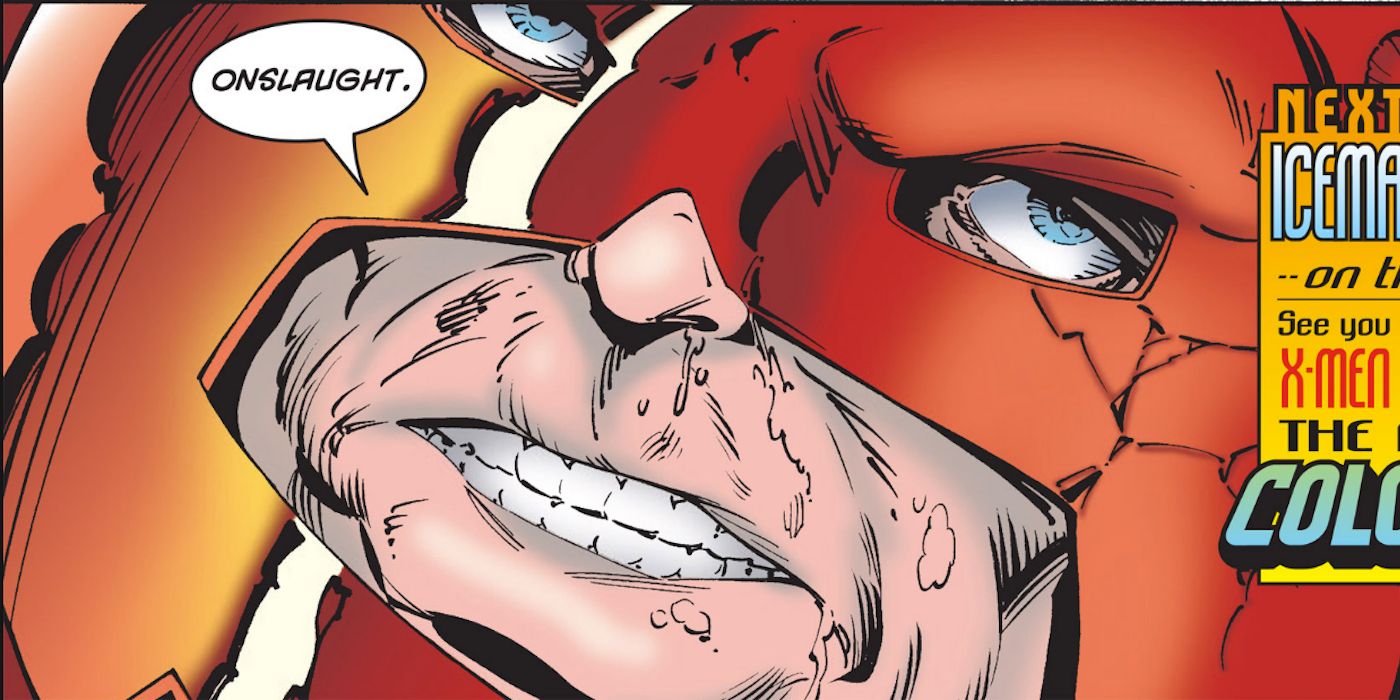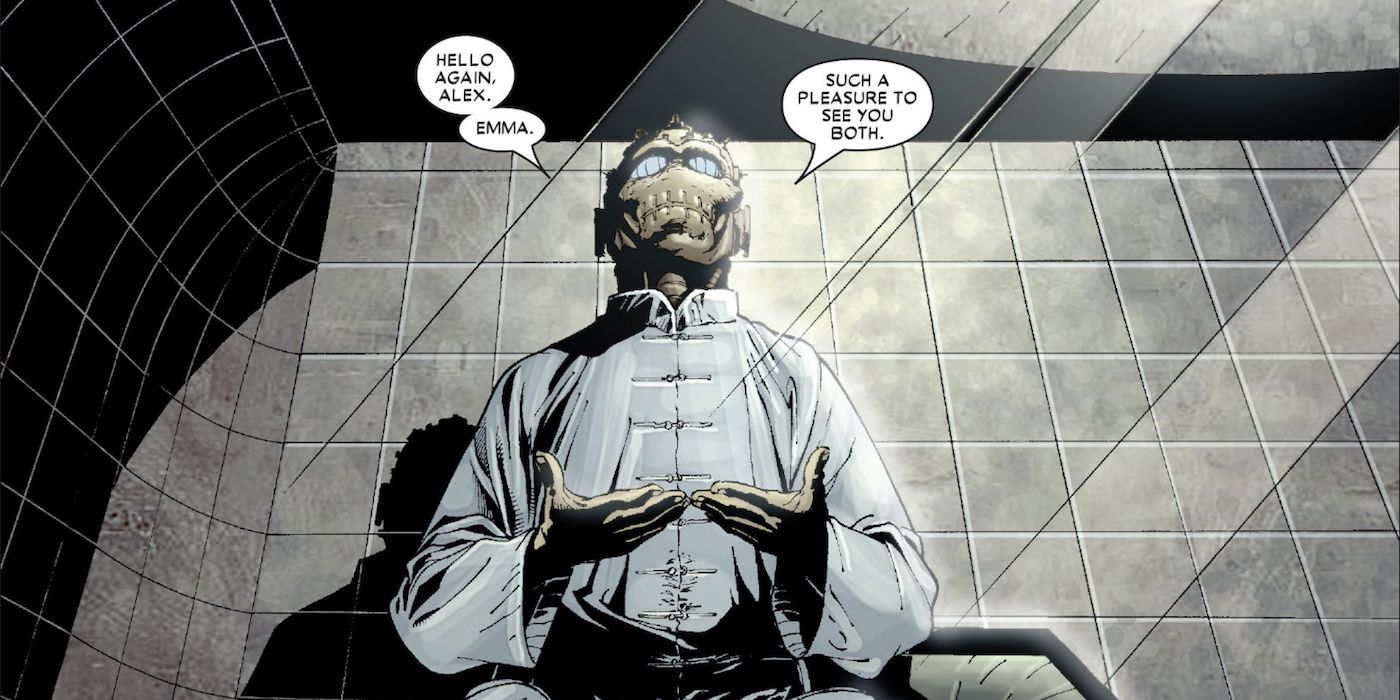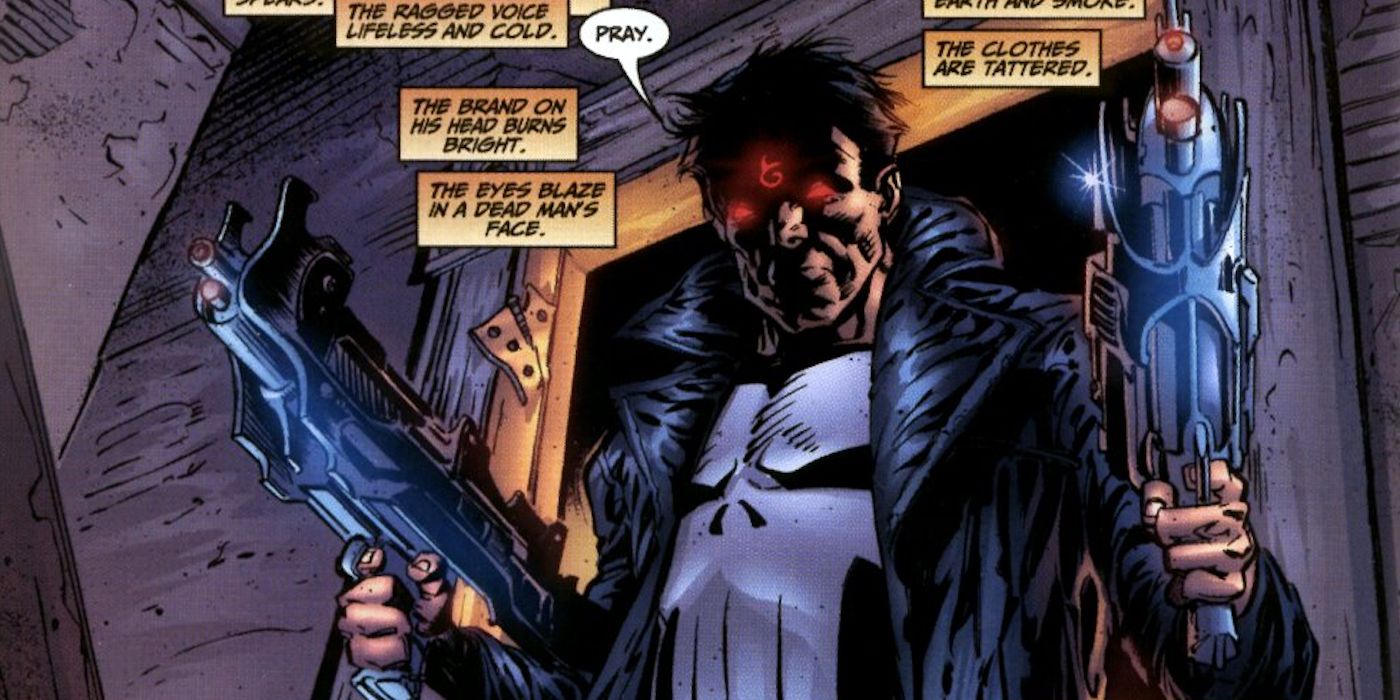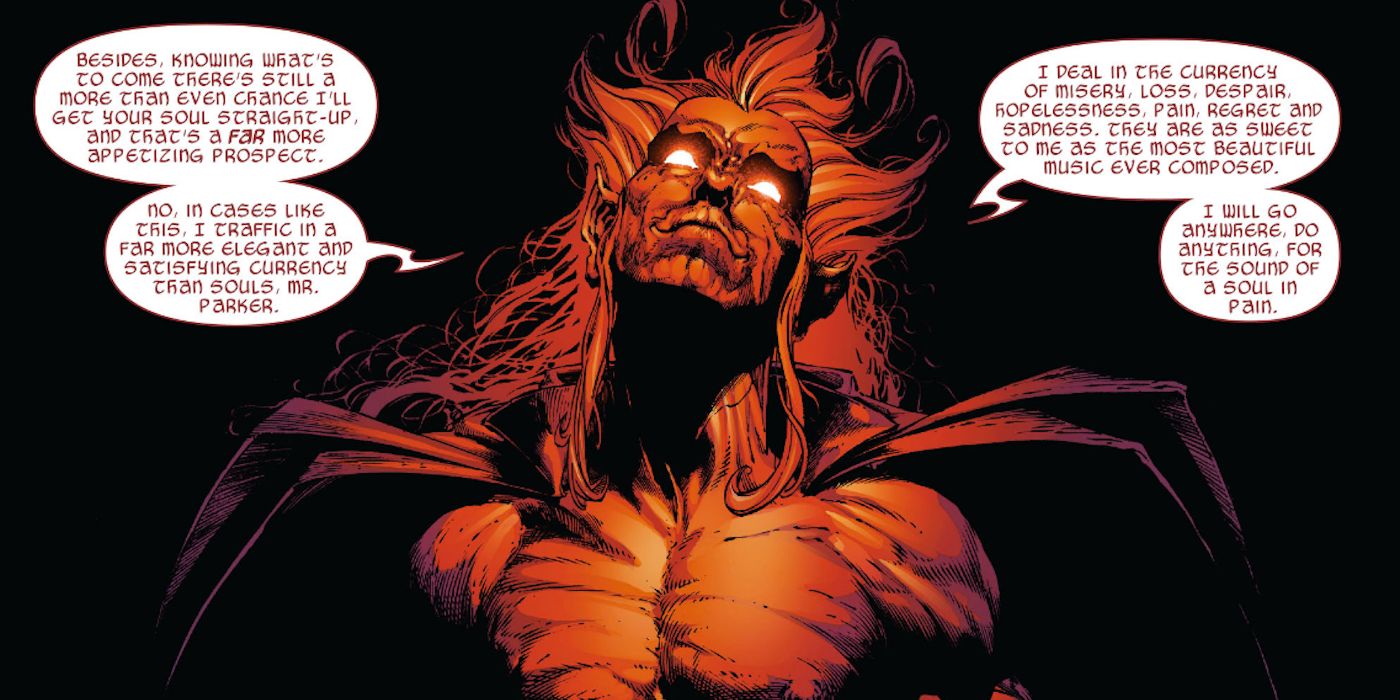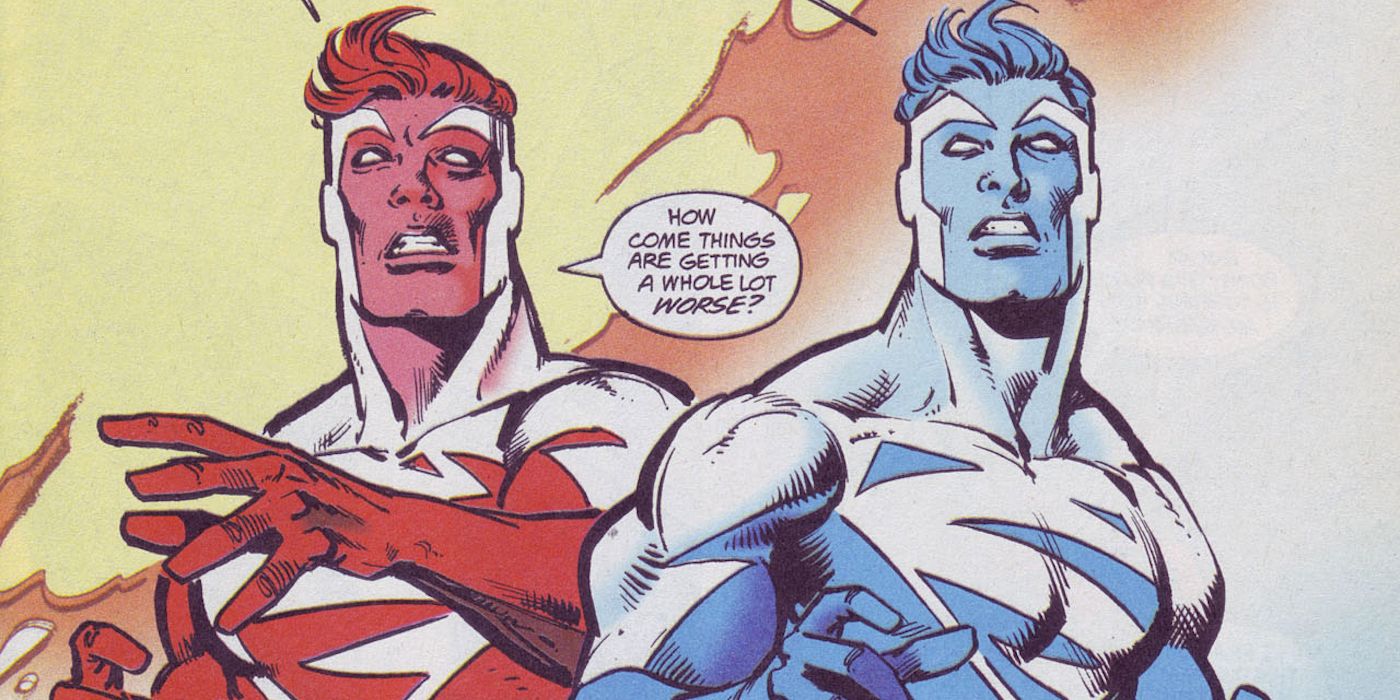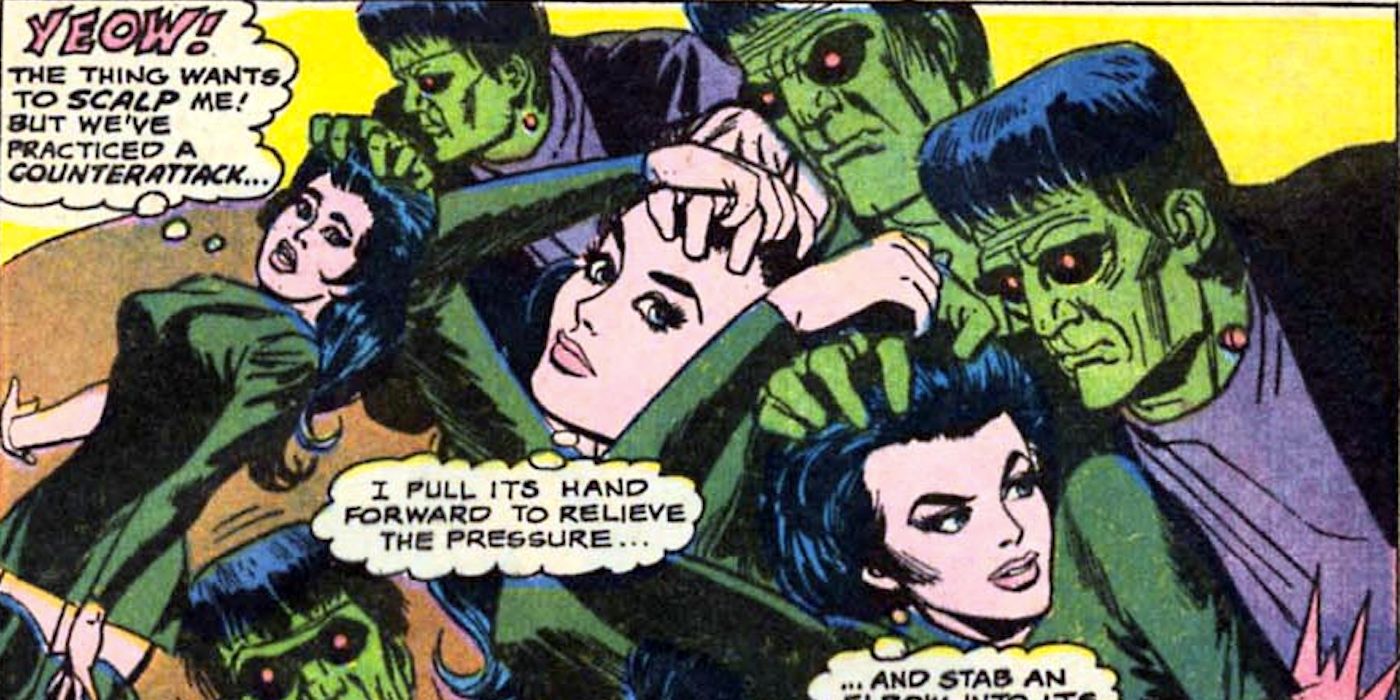Whether you're surviving nuclear oblivion by hiding in a fridge, escaping zombies by scurrying under a dumpster, or just hooked up with Special Agent Mulder, you've just jumped the shark. Referring to an episode of Happy Days where this precise feat is performed by The Fonz, to jump the shark is to pass over an apex of quality -- the very tip of the shark's fin -- before plummeting into a toothy abattoir filled with lazy retcons, puppy power, complete shifts in genre and magical aliens that only we can see. We pinpointed 15 moments where comics channeled their inner Arthur Herbert Fonzarelli in order to dash away years of beloved storylines and character development on water skis waxed with pure absurdity.
RELATED: Iron Man’s DOUCHIEST Movie Moments
Now, some of these shark jumps themselves aren't all necessarily absurd, rather they serve as clear demarcations of severe dips in quality. Oftentimes, these moments indicate where a series should have ended as fans abandon ship, a vanishing point of quality not unlike when The Office's Michael Scott leaving Dunder-Mifflin. Though the series may improve in quality later on, consider these 15 moments glaring red flags that you're about to enter no man's land, except, like, Randy from That 70's Show is there.
15 VENOM: SPACE KNIGHT
Returning from a solo mission, Flash Thompson discovers that the Venom symbiote has become autonomous as it pilots a spaceship in Venom: Space Knight #3 by Robbie Thompson and Ariel Olivetti. This revelation completely undoes the entire metaphor for addiction represented by the Venom symbiote. The symbiote can move on its own, typically as a puddle with a face, but never as a muscly humanoid that can hold its own in a fight.
The symbiote needs a host to survive, and the host needs a dope costume -- symbiosis is right there in the name. If the symbiote can construct a physique rivaling Eddie Brock, does it even need a host? Fortunately, Venom (2016) by Mike Costa serves as a soft reboot, as Venom's autonomous form is now a scrawny, ghoulish junkie alien. This change allows the symbiote to be its own character, albeit still dependent on a host.
14 BATMAN: SUPERHEAVY
In the fallout of "Batman: Endgame," a new Batman was needed, but not Dick Grayson. Instead, long standing Bat-Ally James Gordon takes on the mantle in "Batman: Superheavy" by Scott Snyder and Greg Capullo. To compensate for his lack of ninja training, this Batman is fully integrated with the GCPD. Gordon is assigned a Bat-Mecha as partner, in addition to Bat-themed ordinance like a Batarang-Gun and Bat-Truck. It's a different take on the Batman, but many fans found Gordon-Bat to be too out of touch with the proper Batman style, with the Bunny-Mech in particular leaning too close to Iron Man.
James Gordon also acts out of character. Beforehand, Gordon would cooperate with most vigilantes working in Gotham. Once Batman becomes the only police-sanctioned vigilante, however, Gordon suddenly cannot tolerate vigilantism. Consider "Superheavy" a filler arc that tried something new.
13 INCREDIBLE HULKS
The Hulk works best as a solo book, or as a supporting character in a team book. You can't just have a team where everyone's power is non-sexual smashing, which is precisely why the entire concept of Incredible Hulks (2010) by Grek Pak is one gamma-irradiated shark jump. Only smashing gets old, fast. Bruce Banner leads She-Hulk, Red She-Hulk, Savage She-Hulk, Hulk's son Skaar, Korg, and A-Bomb against threats like Skaar's obligatory long-lost secret evil twin, Hiro-Kala. Yes, really.
The worst part is that in Grek Pak's preceding run of The Incredible Hulk -- which mutated into Incredible Hulks at issue #61 -- Hulk turns out to be a master strategist rather than just a mindless brute. To follow this precisely driven Hulk with a tank-heavy team -- including A-Bomb, unfortunately -- is to go in the exact opposite direction with the character.
12 WOLVERINE: CIVIL WAR
Wolverine's mutant healing factor allows him to recover from most fights, but he is far from immortal. Gradually, Wolverine's healing factor only got stronger, ultimately jumping the shark in "Wolverine: Civil War" by Marc Guggenheim and Alberto Ramos. Wolverine hunts down Nitro, tweaking out on some power-amplifying meds that make him powerful enough to vaporize 60 children. Together with a S.H.I.E.L.D. squad deployed at the last minute, Wolverine just tanks it at point-blank range when Nitro self-detonates.
Singed down to just an adamantium skeleton, Logan regenerates, hair and all, within the span of Nitro's phone conversation to throw down again. Wolverine doesn't even have the strongest healing factor -- that belongs to Deadpool. In "Days of Future Past," a slightly older Wolverine is downed by a single Sentinel blast. Being able to shrug off the nuke scene from Terminator 2 is absolute overkill.
11 SUPERMAN: GROUNDED
Superman jumps the shark by briskly walking in "Superman: Grounded" (2010-2011) by J. Michael Staczynski and Chris Roberson, the last story arc of a comic that had been running since 1939. Believing himself to be disconnected from humanity, Superman decides to just walk across America. Superman argues that the world doesn't really need a Superman, and Supergirl face-palms in response. See, some lady got mad at Superman because her husband died of cancer while Superman was busy fighting in "The War of The Supermen." Was Superman not supposed to fight in the war with his name in it?
Superman reconnects with humanity by setting fire to drug stashes, and with it the whole neighborhood. Superman also gets mad at a group of illegal aliens because they don't contribute to society, despite the fact that by huffing it on foot, Superman proves himself to be an alien who definitely isn't fully contributing to society.
10 KLUH
The first act of Axis by Rick Remender and Adam Kubert focuses on Magneto leading a group of well-written villains (and Deadpool) to counter Red Onslaught and Tonk Stark's adamantium Sentinels -- specifically designed to defeat every Avenger. It's a solid set-up reminiscent of Forever Evil, but things get shaky during The Inversion, where every combatant's moral alignment is flipped in the least nuanced way possible. Everyone starts saying "damn" and "idiot," but Axis jumps the shark when the Hulk gets sad and Kluh, "The Hulk's Hulk," emerges.
Kluh rampages exactly like the Hulk, but with expletives and a mohawk... so, basically a punk Mr. Fixit. Every other Avenger, with the exception of the awesome-douche Superior Iron Man, plays "my first Chaotic Evil RPG Character." Captain America even says, "I've been liberated of the terrible lifelong affliction of putting others' needs ahead of my own." Show, don't tell dude.
9 SPAWN KILLS MALEBOLGIA
Spawn kills his primary antagonist Malebolgia in Spawn #100 by Todd McFarlane, effectively decapitating the series as it scrambled to find a plot. After all, little antagonistic threat remains after you've killed your final boss, let alone room for character growth after you've become King of Hell while simultaneously refusing a genuine angelic halo. The plot meanders: Spawn teams up with some wisecracking demons, there's a haunted Nazi lamp, Overtkill is alive again, a third Redeemer pops up and Spawn continues to use ridiculous guns.
Spawn comics wouldn't improve until Cogliostro reveals he's actually Cain in Spawn #117, usurping Spawn's Hellish Lordship and conveniently curbing his costume's power-level -- effectively undoing the Malebolgia melee. Likewise, Spawn is revealed to have knowledge of all other Hellspawn before him, allowing us to finally move on from Al Simmons' storyline so we could focus on a Viking Spawn and a Cowboy Spawn.
8 FRANKENCASTLE
The Punisher faces a gauntlet of Godkillers, resurrected villains, and a man dressed like a grizzly bear to get a shot at murdering Norman Osborn during "Dark Reign." Punisher effectively gains powers by utilizing some of the finest ordinance available, including an Ant-Man helmet, customized Cap shield, and tons of C4. Punisher's killstreak comes to an end, however, when Daken dices up Frank. Morbius The Living Vampire -- who is like a vampire, but not -- reassembles Frank Castle into Frankencastle, a genuine flesh-golem powered by a Bloodstone in Punisher #11 by Rick Remender and Tony Moore.
Punisher is now a horror book, with Frankencastle protecting the sewer monster community before the series ended five issues later. Frankencastle now has superpowers -- basic Jason Voorhees levels of murdering and invulnerability -- completely missing the point of what made the series so popular thus far, and the eldritch abomination that was "Punisher: Purgatory."
7 SPIDER-MAN: SINS PAST
Spider-Man jumps the shark in "Sins Past" from Amazing Spider-Man #509 (2005) by J. Michael Straczynski and Mike Deodato. Peter discovers through a series of letters from dead GF Gwen Stacy that she cheated on him with Norman Osborn, The Green Goblin, sometime before Harry Osborn overdosed on LSD and definitely before Norman threw her off a bridge. Gwen had secret babies, Sarah and Gabriel, who are now inexplicably adult-sized and invisible to Spider-Sense.
Originally, the twins were supposed to be Peter's offspring, as the Osborn patronage is revealed in a last-minute twist by MJ, who has apparently known for years. Which is worse though: long-lost Spider-Twins or Gwen banging a Goblin? We get the idea behind it, showing your girlfriend lose her virginity to your nemesis is your worst nightmare... or greatest fantasy, if that's your thing.
6 ONSLAUGHT
The Juggernaut, the most unstoppable of the X-Men villains, has been hit with such force that he flies from Canada to New York. Juggernaut freaks out over the horrors he's endured, saying "Onslaught," before going comatose in Uncanny X-Men #322 by Scott Lobdell and Tom Grummett. The cover asks: "Who stopped Juggernaut?" Great question, because Lobdell wrote this scene without any idea of what "Onslaught" referred to -- He just thought it sounded cool, which, admittedly, it does!
Onslaught is revealed as a psychic manifestation of Charles Xavier's psyche with a dash of Magneto. To stop Onslaught, the Avengers, Fantastic Four, and others sacrifice themselves to be reborn in a pocket dimension courtesy of Franklin Richard's plot-bending powers in Heroes Reborn. Heed Juggernaut's warning: skip it. Skip Onslaught, with Joshua the Magneto clone and Professor X hiding feelings for Jean Grey. Especially skip Heroes Reborn, though, with its bizarrely buxom Captain America.
5 THE RETURN OF XORN
The most shocking moment of Grant Morrison's New X-Men is when Xorn, the beloved Buddhist mutant with a star for a face, reveals that he is really Magneto. Xorn was such a cool new character, making this betrayal feel more savage. This loss was too much for some, so in X-Men #157 (2004) by Chuck Austen and Salvador Larroca, the X-Men discover Xorn's twin brother, Shen Xorn. Blessed with the same Xorny power-set and dope skull mask, Shen reveals in X-Men #162 that it wasn't Magneto posing as his brother, rather Kuan-Yin Xorn was under Sublime's influence, posing as Magneto posing as Xorn.
With one shark jump, we've effectively gained a carbon copy of Xorn, vindicated the dead Xorn and sacrificed one of Magneto's greatest moments. It's no coincidence that new Xorn was one of the mutants to be de-powered on M-Day.
4 PUNISHER: PURGATORY
The beauty of The Punisher is in his simplicity; he's the superhero with the power of murder. "Punisher: Purgatory" by Christopher Golden and Tom Sniegoski however, asks, what if The Punisher was, like, the opposite? Jumping the shark, Frank Castle commits suicide, only for his soul to be spared from damnation by Gadriel, Heaven's former weapon master and the guardian angel who failed to watch over Castle's family. Frank can be reunited with his family in Heaven if he double-kills enough demons with some heaven-guns, minor invulnerability, and a nose that can smell the supernatural.
Odd that the most homicidal hero is the Heavenly Host's top pick, right? Well, Frank's family wasn't killed by accident, rather they were sacrificed for a ritual to create a demonic weapon: one Frank Castle. That's precisely what the (relatively) realistic Punisher comics were missing -- The Punisher retroactively becoming Spawn.
3 ONE MORE DAY
To save Aunt May from a gunshot wound that apparently no one can heal, Spider-Man makes a deal with the devil, jumping the shark in One More Day by Joe Quesada and J. Michael Straczynski. This is Peter Parker acting totally out of character. Instead of reflecting upon the consequences of unmasking himself during Civil War -- as the bullet was meant for Peter -- Spider-Man selfishly needs to save Aunt May, who actually wants to die to be reunited with Uncle Ben.
Spider-Man sacrifices his marriage with Mary Jane for a soft reboot. Mephisto's devil magic revives Aunt May -- and Harry Osborn from an LSD overdose as a freebie. Also, everyone forgets Peter Parker is Spider-Man, even villains who knew beforehand like Venom. Although the subsequent Brand New Day wasn't terrible, One More Day was the jumping off point for many.
2 SUPERMAN RED/SUPERMAN BLUE
After Superman died, a full year of comics heralded the return of the Man of Steel. Finally, Superman returned in both red and blue flavors in Superman Red Superman Blue #1 by Dan Jurgens. Superman has been turned into a being of pure blue energy, and then split into another being of pure red energy. Blue Raspberry Superman doesn't have X-Ray vision, but he can phase and throw lightning. Superman Red... also has electricity powers. Some Superman comics were split into a Red and Blue story, which meant you got two boring short stories starring basically the same character.
This Superman super-split was advertised as a permanent change on the covers, conveniently allowing fans to not waste their money on this inexplicable continuation of a Silver Age Superman storyline. Superman was soon switched back, mainly because of fan backlash, but also because Lois wasn't into group stuff.
1 THE NEW WONDER WOMAN
To update Wonder Woman into more of a modern feminist, writer Denny O'Neil hamstrung the most powerful super-heroine in comics by removing Wonder Woman's powers in Wonder Woman #179 (1968), albeit with gorgeous art by Mike Sekowski. The idea was to make Diana Price into a badass normal lady like The Avengers' Emma Peele. You know, that character from the series where you have to clarify it's the lesser version every time?
Anyway, "The New Wonder Woman" performs a ritual to remove her mystic powers, in order to stay with mankind and help her basic boyfriend, Steve Trevor, stay out of jail. Then she learns karate and fights some Frankensteins. DC's attempt to appeal to feminists ended up gaining the ire of Gloria Steinem and fans. O'Neil quickly backpedalled to restore Wonder Woman's abilities; however, the series wouldn't regain its previous quality until Crisis On Infinite Earths in 1985.
When did your favorite comic series jump the shark? Should we have included The Spider Totem? Nightcrawler's demon daddy? That time Ultimate Wolverine and Spider-Man switched bodies? Let us know in the comments!

